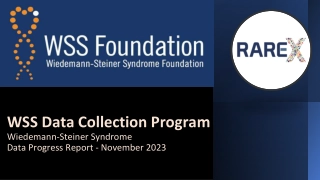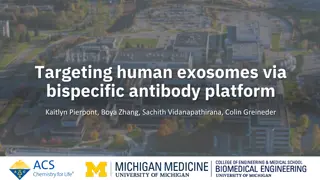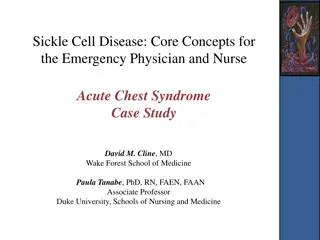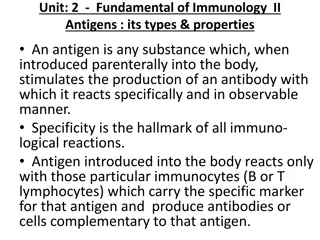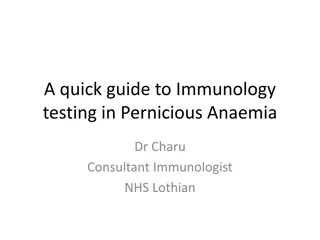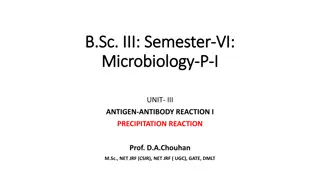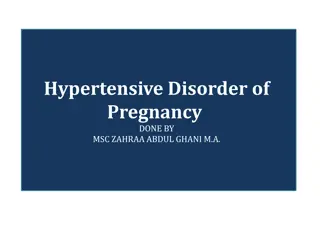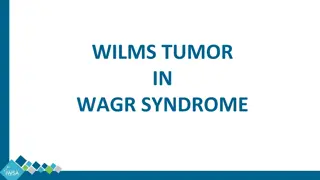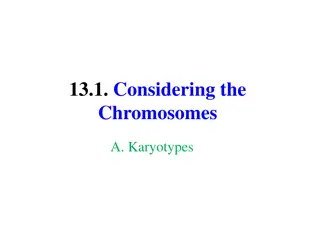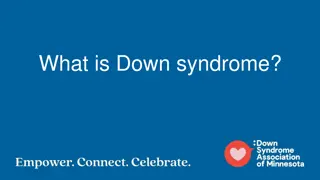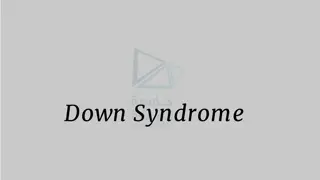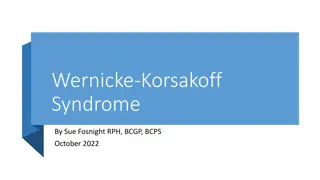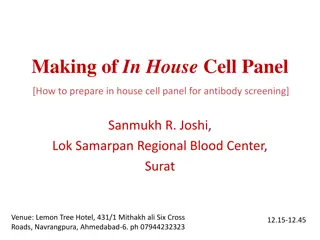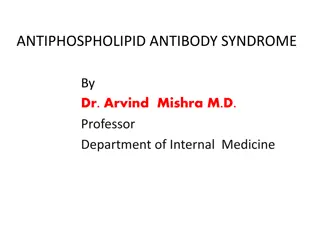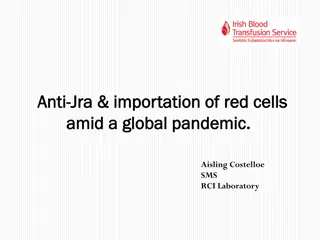Antiphospholipid Antibody Syndrome
Antiphospholipid Antibody Syndrome, characterized by recurrent thrombosis and pregnancy morbidity, is an acquired condition involving antibodies against phospholipid-binding plasma proteins. Learn about its classification, epidemiology, and pathogenesis.
Download Presentation

Please find below an Image/Link to download the presentation.
The content on the website is provided AS IS for your information and personal use only. It may not be sold, licensed, or shared on other websites without obtaining consent from the author.If you encounter any issues during the download, it is possible that the publisher has removed the file from their server.
You are allowed to download the files provided on this website for personal or commercial use, subject to the condition that they are used lawfully. All files are the property of their respective owners.
The content on the website is provided AS IS for your information and personal use only. It may not be sold, licensed, or shared on other websites without obtaining consent from the author.
E N D
Presentation Transcript
ANTIPHOSPHOLIPID ANTIBODY SYNDROME By Dr. Arvind Mishra M.D. Professor Department of Internal Medicine
LECTURE AND MCQs
ANTIPH0SPHOLIPID ANTIBODY SYNDROME Antiphospholipid an autoantibody-mediated thrombophilia characterized by recurrent arterial or venous thrombosis and/or pregnancy morbidity in the presence of autoantibodies against phospholipid (PL)- binding plasma proteins. antibody syndrome is acquired
Classification and Nomenclature of Antiphospholipid Antibodies 1)Antibodies against cardiolipin (aCL), a negatively charged phospholipid, detected by enzyme-linked immunosorbent assay (ELISA).
2)Antibodies against apolipoprotein - 2 Glycoprotein I (anti -2GPI) detected by ELISA in the absence of PL.
3)Lupus Anticoagulant detected by clotting assays. LA constitutes a heterogeneous group of antibodies directed also against PL binding proteins, mainly -2GPI and prothrombin.
LA antibodies induce elongation in vitro of the following clotting times: 1. Activated partial thromboplastin time (aPTT) 2. Kaolin clotting time (KCT) 3. Dilute Russel viper venom test (dRVVT)
Antibodies against phospholipids/cholesterol complexes detected as biologic false-positive serologic test for syphilis (BFP-STS) and Venereal Disease Research Laboratory Test (VDRL).
EPIDEMIOLOGY occur in 1 5% of general population Systemic lupus erythematosus (SLE)(1/3rd cases) Systemic sclerosis (scleroderma) Sj gren's syndrome Dermatomyositis Rheumatoid arthritis
PATHOGENESIS- Preceding infections as initiating event Anti phospholipid antibodies 1)inactivate natural anticoagulants such as protein C(Activated protein C (APC) binds the pro- coagulant factors Va and VIIIa and inactivates them) 2)activate cells involved in the coagulation cascade to a prothrombotic phenotype
3) activate complement 4)activate nuclear factor kappa B (NF-kB) in monocytes and endothelial cells leading to the secretion of pro-inflammatory cytokines, ; the expression of adhesion molecules and ; and the expressions of tissue factor, changing the phenotype of these cells to a prothrombotic form
MANIFESTATIONS Venous Thrombosis and Related Consequences % Deep vein thrombosis 39 Livedo reticularis 24 Pulmonary embolism 14 Superficial thrombophlebitis 12
Arterial Thrombosis % Stroke 20 Cardiac involvement 14 Transient ischemic attack 11 Leg ulcers and/or digital gangrene 9 Arterial thrombosis in the extremities 7 Retinal artery thrombosis 7 Ischemia of visceral organs 6
NEUROLOGIC MANIFESTATIONS 1)Migraine 20% 2)Epilepsy 7% 3)Chorea 1% 4)Cerebellar Ataxia 1% 5)Transverse Myelopathy 0.5%
RENAL MANIFESTATIONS 1)Renal artery thrombosis 2)Renal vein thrombosis 3)Fibrous intimal hyperplasia
OSTEOARTICULAR MANIFESTATIONS 1)Arthralgia 39% 2)Arthritis 27% OBSTETRIC MANIFESTATIONS 1)Preeclampsia 10% 2)Eclampsia 4%
FETAL MANIFESTATIONS 1)Early fetal losses(<10 weeks) 35% 2)Late fetal losses(>10 weeks) 17% 3)Premature birth 11% HEMATOLOGICAL MANIFESTATIONS 1)Thrombocytopenia 30% 2)Autoimmune hemolytic anemia 10%
DIAGNOSIS Presence of at least one clinical and one laboratory criteria CLINICAL CRITERIA 1)Vascular thrombosis defined as one or more episodes of arterial, venous or small vessel thrombosis in any tissue or organ 2)Pregnancy morbidity defined as; a)One or more unexplained death of a morphologically normal fetus at or beyond the 10th week of gestation.
b)One or more premature births of a morphologically normal neonate before 34th week of gestation because of eclampsia ,preeclampsia,or placental insufficiency. c)Three or more unexplained consecutive spontaneous abortions before 10th week of gestation. LABORATORY CRITERIA 1)Lupus anticoagulant 2)Anticardiolipin antibody 3)Anti 2GPI antibody at intermediate or high titres on two occasions,12 weeks apart.
DIFFERENTIAL DIAGNOSIS 1)Inherited or acquired causes of thrombophilia 2)Coombs positive hemolytic anemia 3)Livedo reticularis can be seen in a)Polyarteritis nodosa b)Cryoglobulinemia c)Lymphomas d)Myeloproliferative disorders e) Atherosclerosis
TREATMENT a)Anticoagulants i.e. warfarin and aspirin for life long to maintain INR b/w 2.5 to 3.5 if patient developed thrombotic event. b)In Pregnancy combination of heparin and aspirin. c)80 mg aspirin daily in antiphospholipid antibody positive patients to prevent thrombotic events.
If recurrent thrombotic events despite adequate anticoagulation; 1)IVIG 400 mg/kg qd for 5 days 2)Anti-CD 20 monoclonal antibody 375 mg/m2 per week for 4 weeks
1)All are true regarding lupus anticoagulant except a)Thrombocytosis b)Increased abortions c)Rashes d)Arterial thrombosis
2)Isolated prolongation of APTT with bleeding caused by all except a)Factor VIII Deficiency b)Factor IX Deficiency c)Factor XI Deficiency d) Presence of Lupus anticoagulant
3)A 25 year old lady presented with history of recurrent abortions.The most relevant investigation to identify the cause is a)Bleeding time b)Prothrombin time c)Dilute russel viper venom time d)Thrombin time
4)Treatment of choice in a pregnant women with positive test for antiphospholipid antibodies a)Aspirin only b)Aspirin +low molecular weight heparin c)Aspirin +warfarin d)Rituximab/IVIG
5)True about lupus anticoagulant include all except a)Life threatening bleeding episodes b)Increased aPTT c)May occur without clinical signs d)Recurrent mid trimester abortions
6)Most common hematological manifestation of Antiphospholipid antibody syndrome is a)Anemia b)Leucopenia c)Thrombocytopenia d)a+b
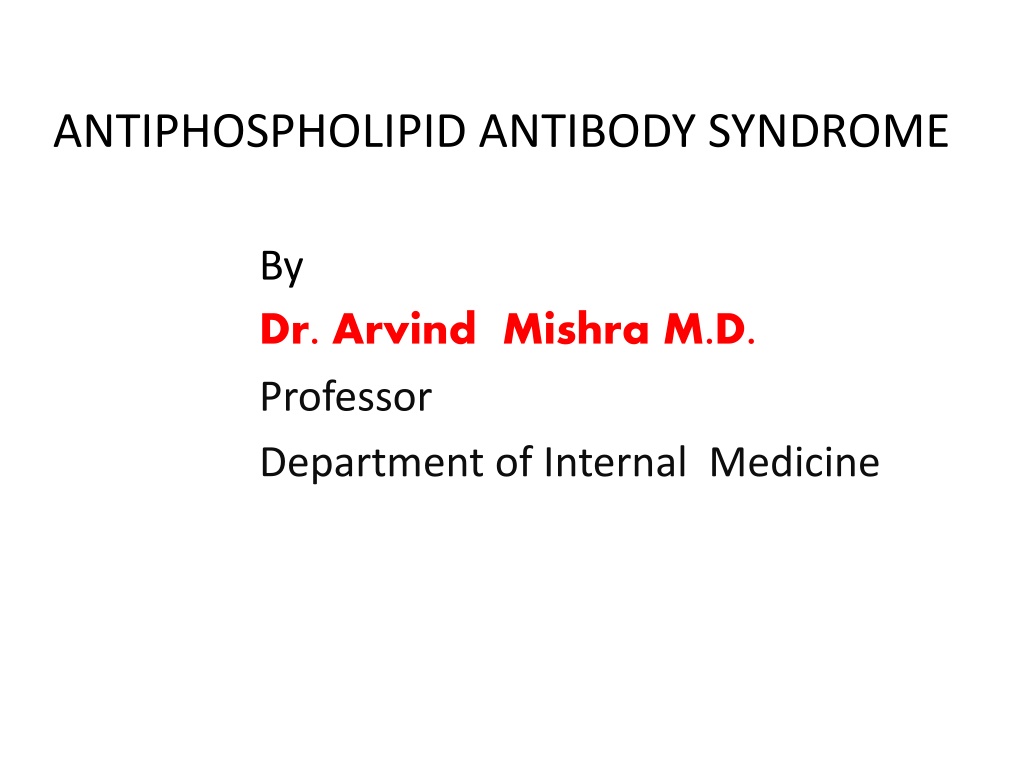



![❤[PDF]⚡ Zee Zee Does It Anyway!: A Story about down Syndrome and Determination](/thumb/20462/pdf-zee-zee-does-it-anyway-a-story-about-down-syndrome-and-determination.jpg)
